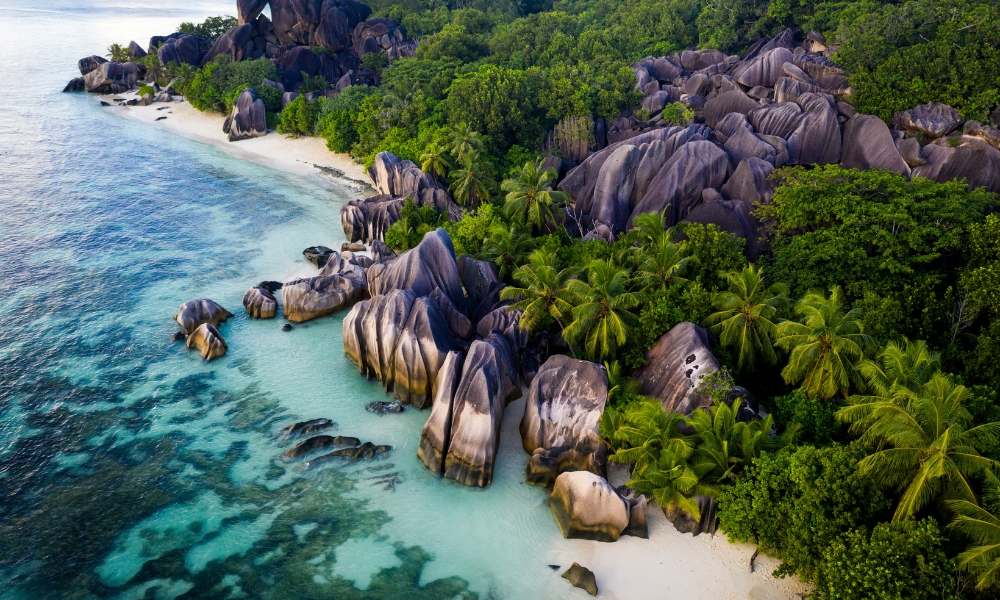Why La Digue Is the Indian Ocean’s Best-Kept Secret
 The Beauty of La Digue
The Beauty of La Digue
As global travel trends shift toward more authentic, less congested experiences, La Digue—a small island in the Seychelles—is gaining quiet popularity. Tucked within the Indian Ocean, this tropical hideaway has been labeled by many as a “paradise on Earth.” Far from the pace of urban resorts or overtouristed destinations, La Digue offers a rare combination: natural beauty, cultural richness, and a lifestyle that encourages you to slow down.
Why La Digue Feels Different
La Digue stands apart from its more developed neighbors like Mahé and Praslin. The island has no airport and very few cars. Most people move around by bicycle or on foot, contributing to its serene rhythm. For travelers chasing sustainable travel practices and a lower-carbon footprint, La Digue’s pace is a welcome change from mass-market tourism.
Its unspoiled charm—marked by granite boulders, turquoise water, and soft white sand—has long attracted photographers and filmmakers. Yet, despite its visual appeal, it retains a refreshingly low-key atmosphere.
Timeless Island Life
With a population of fewer than 3,000 people, La Digue has preserved much of its traditional Seychellois culture. Local residents are known for their hospitality and openness. Creole culture—blending African, French, and Asian influences—comes through in everything from architecture to cuisine.
You’ll find no high-rise resorts or sprawling developments here. Instead, accommodations are modest guesthouses or family-run villas. For travelers interested in trending sustainable travel destinations for solo female travelers or culturally immersive getaways, La Digue offers authenticity without sacrificing comfort.
Beaches That Live Up to the Hype
Few beaches in the world rival Anse Source d’Argent in natural beauty. Framed by ancient granite formations and shaded by swaying palms, it’s frequently listed among the world’s most stunning coastal spots. But Anse Source d’Argent is just the beginning.
Though less regularly used, other beaches, including Grand Anse and Anse Cocos, are also amazing. These stretches of coastline offer all the peace and beauty you could wish for if your next trip is focused on solitude.
Environmental Exploration
Natural resources of La Digue are under great protection; ongoing initiatives aim to safeguard sea turtles, coral reefs, and birds. Conservation alliances help manage much of the island. This situation makes the island a model for environmentally friendly travel, particularly for other island areas coping with climate change.
Popular but carefully controlled to minimize environmental damage are sports including snorkeling, diving, and trekking. The island’s layout enables responsible tourism, whether your trip needs are for solitary travel tech or for an eco-aware explorer looking for travel gear basics with sustainable materials.
Cyberdetox and Mindful Travel
La Digue appeals mostly for not having fast Wi-Fi or high-tech infrastructure. Many see the island as a means of unplugging and reestablishing connection with nature. Fewer screens and more actual involvement are found here.
La Digue provides a counterbalance in a world where algorithm-driven travel concepts rule: a place where connection happens through conversation rather than code. For anyone looking for a real travel inspiration reset in 2025, this is the perfect place.
 St Anne’s Catholic Church
St Anne’s Catholic Church
Planning a La Digue Trip?
Reaching La Digue entails flying into Mahé, hopping a short flight or ferry to Praslin, and then sailing to the island. This layered trip serves as a filter, reducing over-tourism and improving the arrival experience.
Travel technology tools abound in terms of convenience, but La Digue is about simplicity. More important than apps or itineraries are a decent travel bag, dependable walking shoes, and a curiosity for slow life.
Practical Tips and What to Expect
English and French are widely spoken, and the Seychellois rupee is the local currency. You won’t need a visa for short stays if you’re from the EU, U.S., or U.K., though checking updated visa requirements is always recommended.
The weather is warm year-round, but the dry season from May to October is ideal for outdoor exploration. If you’re compiling your travel packing list or coordinating around travel insurance comparison sites, plan for sun protection and water-friendly gear.
Conclusion
La Digue may not have the buzz of Bali or the glitz of the Maldives, but that’s precisely its appeal. It offers something increasingly rare in travel today: a chance to be still, to observe, and to truly experience a place without constant interference.
If your 2025 travel planning includes destinations that balance nature, culture, and calm—without compromising on authenticity—La Digue deserves a spot. In a time when travelers are more thoughtful about impact and intention, this laid-back island proves that “paradise” isn’t a marketing term. It’s a place you can actually visit—and remember.



